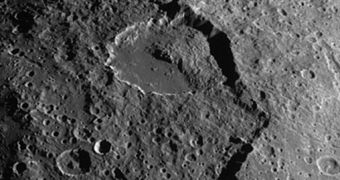Though it only has a radius of 734.5 kilometers (456.4 miles), Iapetus is definitely one of the most interesting moons around the gas giant Saturn, and also one of the most interesting celestial bodies in the solar system. This has been made obvious recently, after experts discovered numerous landslides.
These events are not rare in the solar system. Experts have identified instances of landslide on numerous planets and moons. Earth is undoubtedly the leader as far as landslides go, followed by Mars and Iapetus. However, the two planets are significantly larger than the moon.
Astronomers at the Washington University in St. Louis (WUSL) School of Arts & Sciences say that Iapetus has, statistically speaking, the second-largest number of giant landslides of any body in the solar system, after the Red Planet.
The spectacular topography characterizing this moon is the primary reason for this high number of events that shape the landscape. The moon features extremely tall mountain ridges, reaching altitudes of up to 20 kilometers (12 miles), a couple of times higher than those of Mount Everest.
WUSL professor of earth and planetary sciences William McKinnon, PhD, says that this special topography leads to instances where landscape features that have stood for millions of years simply give way, producing massive avalanches that engulf the areas below.
Unlike on Earth, the ice falling from Iapetus' mountains catches on high speed, and then begins to flow, rather than tumble. This is weird because the friction coefficient needs to drop in order for that to happen. According to the team, this is what allows the ice landslides to travel extensive distances.
Additional details of the ice avalanches on the Saturnine moon appear in the July 29 issue of the top journal Nature Geoscience. The study includes experts from the Lunar and Planetary Institute and the NASA Ames Research Center (ARC), in Moffett Field, California.
On Earth, the material set in motion by avalanches travels a horizontal distance that is smaller in length than twice the distance it covered while falling. In other words, if rocks fall from 1 kilometer above the surface, they usually travel less than 2 kilometers horizontally.
But landslides can sometimes travel between 20 to 30 times farther than the distance they fall. This means that other forces acting inside the moving debris mass need to be taken into account, in addition to friction.
“The landslides on Iapetus are a planet-scale experiment that we cannot do in a laboratory or observe on Earth,” explains WUSL SAS graduate student in Earth and planetary sciences, Kelsi Singer.
“They give us examples of giant landslides in ice, instead of rock, with a different gravity, and no atmosphere. So any theory of long runout landslides on Earth must also work for avalanches on Iapetus,” he concludes.

 14 DAY TRIAL //
14 DAY TRIAL //